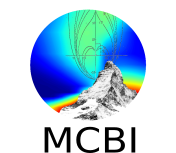Monday 23/09/2019
16:00 - 17:00 Welcome and registration
17:00 - 20:30 Session 1
20:30 - 22:00 Welcome Cocktail + buffet
Tuesday 24/09/2019
08:30 - 12:00 Session 2
14:00 - 16:00 Student Poster Award Session
16:00 - 19:50 Session 3
Wednesday 25/09/2019
08:30 - 11:40 Session 6
11:40 - 12:10 Student Best Poster Award Ceremony
16:00 - 19:45 Session 5
20:30 - 22:30 Conference dinner
Thursday 26/09/2019
08:30 - 12:00 Session 4
16:00 - 19:45 Session 7
Friday 27/09/2019
08:30 - 11:55 Session 8
12:00 - 12:30 Closing remarks
Session 1
Review of beam instability mechanisms and modelling: impedance, electron cloud & ions, coherent beam-beam, two-particle models, two-mode models, Vlasov solvers, macroparticle codes) + all the mitigation methods used in all the machines (passive / active) and why (input from operation)
Session 2 (1st mitigation method)
Landau Damping: Theory (and in particular approximations), applications, reasons for loss of Landau damping; BNS damping for linear accelerators
Session 3 (2nd mitigation method)
"Operational knobs": Optics modifications (linear coupling, gamma transition, Q’, Q”, etc.) for transverse; RF changes for longitudinal; effect of energy
Session 4 (3rd mitigation method)
Feedback systems: technology, limitations, transverse, longitudinal
Session 5 (4th mitigation method)
Instability mechanism identification and reduction: impedance budget, impedance reduction, e-cloud suppression, space charge reduction, beam-beam reduction
Session 6
Role of diagnostics of instabilities in mitigations: Direct measurements of the incoherent tune spread and the stability diagrams, BTF, Schottky, wide band pick ups, quadrupolar pick-ups, impedance localisation, use of transverse damper as a controlled impedance
Session 7
Impacts of mitigation methods and comparison: interplay between instability mitigations and incoherent effects, role of space charge, role of beam beam, degradation of lifetime, synchro-betatron resonances
Session 8
Challenges for high intensity/brightness operation in future machines + closing remarks: many octupoles needed due to small beam sizes, damper in few turns, damper for intra-bunch motion, ultra-low impedance design, interplay between low impedance and e-cloud/FBII suppression
